Archive

Immortality, what does that even mean?
There are only 1440 minutes in a day. To give you an idea of how little time 1440 minutes is, that is not even enough to watch all of the star wars movies during a marathon. Our time is precious. We are all aware of that. But what if you didn’t need to worry about…
Read more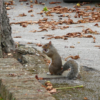
Genetically modify animals to restore the balance in ecosystems
Ecosystems become unbalanced when local animal species disappear or invasive (exotic) species take over. For example, the increase in the number of invasive grey squirrels in the UK is a threat to the local red squirrel population. They also prey on chicks and eggs and damage trees. A recent study from Scientific Reports shows that…
Read more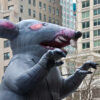
New neighbors in the concrete jungle
These days, you can hear the word zoonosis everywhere: in thousands of news articles, podcasts, television shows, and often to describe the recent coronavirus that changed our lives. Like many pandemics from the past, this one started as an infectious disease in wild animals that jumped to humans. Thus, should we be afraid of wild…
Read more
No more meat? Start with bite-sized steps
We now know that eating (too much) meat is bad for the environment. Various political parties, including GroenLinks, D66 and the ChristenUnie, discussed during the parliamentary elections in March 2021 that in order to achieve the government’s climate goals by 2030, our meat consumption must be reduced. Some parties even talked about a “meat tax”,…
Read more
Power of global biodiversity targets
In September 2020, the United Nations reported that NONE of the 20 targets for saving biodiversity have been achieved. Why did we fail? And what can we do for the future? Why is biodiversity important? It’s because nature is beautiful. – True. Because I like animals. – Of course, right. Everyone has their own reasons….
Read more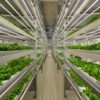
Farming without fields
Perhaps you have already eaten them without knowing it: vegetables that are not grown in the ground, but in a flat. So far there are three large “vertical farms” in the Netherlands. Not somewhere in the countryside, no, they are all in the big cities. A handy invention when you consider that in the future…
Read more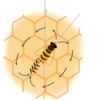
Wag that butt: Bee body language
Written by: Jolijn Jansen After a boring corona winter, we are ready to party. But we humans are not the only ones with an urge to dance. The insects in our garden are also coming back to life now that the sun is out. A real party animal is the bee. They dance to their…
Read more
Digital health today
Written by Monicah W. Kirathi At the end of 2019, a new illness, COVID-19 began affecting people on a worldwide scale. On February 27, 2020, the first confirmed case was reported in the Netherlands. As the world changed to adhere to new restrictions, the use of digital technology became one of many cornerstones, providing structure to…
Read more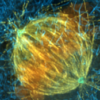
Computing realistic images
You probably recognize the situation: a photo is blurred because your phone was out of focus, or because you zoomed in too much. Scientists struggle with a similar problem. If they use a microscope to zoom in on something very small and make a picture, the image is always blurry. Even with the best microscope…
Read more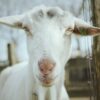
Infectious livestock
In 2020, researchers from Utrecht University determined that people living in a radius of 2 kilometres around a goat farm have an up to 55% higher chance of developing pneumonia. The cause of the relationship between goat farms and the increased risk of pneumonia is as of yet unknown. But other animals that we keep…
Read more
